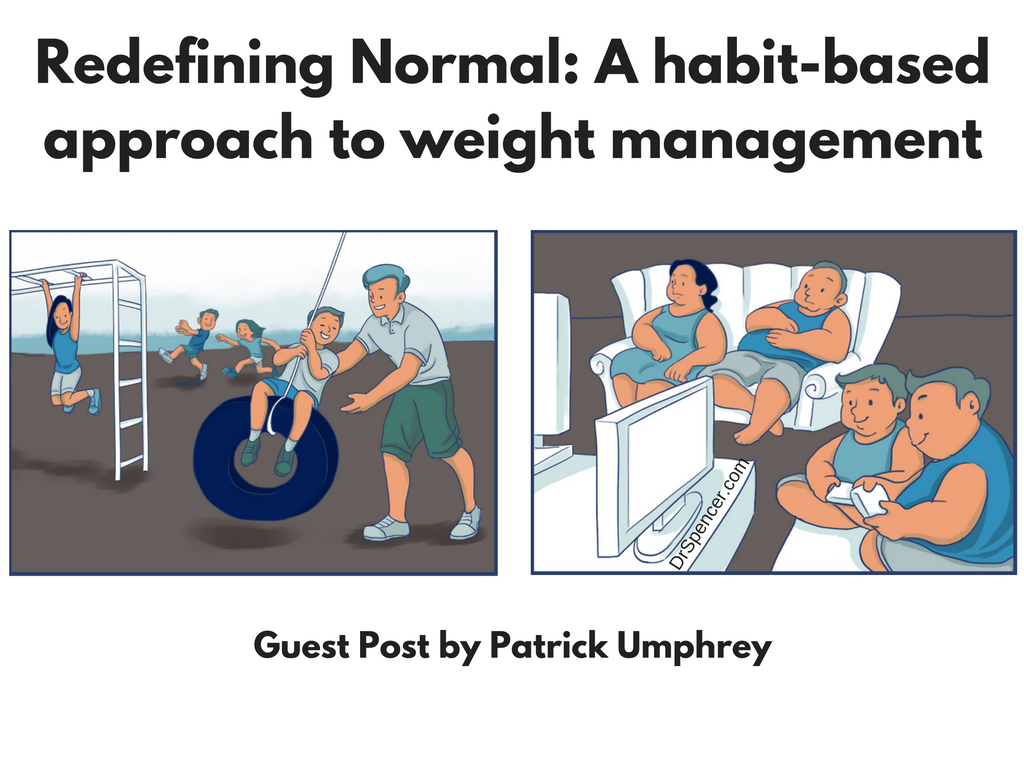
Meet the Davis family.
They have 6 children age 10 through 22.
It’s normal for them to be seen walking around the neighborhood in groups. The children play outside daily. They do not own gaming systems, and physical activity is a normal part of daily life for them. They have a large (and impressive) swing set in their backyard complete with a tire swing and monkey bars. If they aren’t playing on that, they’re playing some version of capture the flag across the entire neighborhood. I know this because I sometimes see them hiding in my backyard holding a big-ass white flag, LOL.
Tuesday night is Ice Cream Night at the Davis house. It’s a time when they ALL gather to enjoy a bowl of ice cream as a family. It’s normal for them…they’ve done this for years. This is generally the only time they have any sort of dessert.
Wednesday night is movie night! They make popcorn and watch a movie together in their living room.
They don’t tend to eat at restaurants often. Dad enjoys cooking as a side-hobby (he is quite good at it) and so he prepares most meals for the family. With 6 children, cooking at home is cost effective; it’s too expensive for a family of 8 to dine at a restaurant regularly.

The boys play basketball at their local church. They are part of a family league that organizes friendly competition on a set schedule. On one additional night, the league holds an open gym where the Davis’ often join in pick-up games. This is a normal part of their schedule.
No one in the Davis family is overweight.
Meet the Smith family.
They have 3 children age 11 through 16.
It’s normal for them to spend time together in the living room. Mom and Dad enjoy watching sitcoms while the children play an online game together after completing their homework. The children share a common interest in the game, so they get along well. The game includes Player-vs-Player (PvP) team mode in which the children excel.
It’s normal for the Smith family to pick up donuts from the local bakery for breakfast. They usually buy 1 dozen and any leftovers remain on a large plate with a glass cover set on the kitchen counter. The donuts are a convenient snack and oftentimes they can get another meal out of them without having to make an additional trip to the bakery.
The Smith family regularly has dessert after dinner. Grandma and Grandpa Smith live a short drive away, and many evenings they will join the family for dinner.In addition to getting spend quality time together, everyone gets to enjoys the homemade pies Grandma bakes. Pecan and apple are her specialties and they’re genuinely better than what you’d find at most restaurants and bakeries.
Snacks are easy to access in the Smith household. When their favorite snacks go on sale, they stock up. They do this with other foods too: there’s always a variety of chips, sweets, and shelf-stable foods like snack cakes (Little Debbie Oatmeal Cream Pies anyone hnnnnnng?) and granola bars in their house.

Mrs. Smith loves to bake too. It’s normal to see some sort of baked food (brownies or some other type of bar) on the counter-top in the kitchen. The house usually smells great and it’s easy to grab a treat as you walk by.
Members of the Smith family struggle with weight as well as some related health conditions.
Both of these families are full of truly great people and this post is not attempting to suggest otherwise. Both of these families are just doing what is NORMAL for them. These are daily or weekly occurrences in their lives that do not seem out of the ordinary or require deliberate thought or action.
There are some pretty big differences between what is “normal’ for these two families. There are also some pretty big differences in health and body weight status between these two families, and these are connected. Maintaining an active lifestyle and clinically healthy body weight is the result of the Davis family’s normal.
If your goal is to lose weight and then MAINTAIN that weight loss then you’re going to need to a new normal.
You aren’t trying a “new diet”.
You aren’t on a “weight loss program”.
You are redefining and redeveloping what will be “normal” for you.
Losing weight and maintaining weight loss is not an obstacle with a one-time solution. You’re going to need a set of habits that you do for the rest of your life. It’s not going to happen all at once, but it NEEDS to happen if you don’t want yet another yo-yo dieting experience where you “go on a diet” and then “go off the diet” while not retaining any of the things you may have changed along the way. This may sound daunting, but creating a new normal is not like suddenly trying to compete in a triathlon after being sedentary for years. It’s a developmental process of trial and error where you refine things as you go.
Developing a “new normal” is additionally important if you have children and your dietary choices are having a potentially lifelong impact on them. If you are a parent, you play a role in establishing what is NORMAL for your kids, and those habits you form and the relationship with food you help them develop can be long-lasting.
How to go about habit forming can be tricky, but here is a general template you can immediately put into action. Start by tracking one habit at a time. You can use a spreadsheet to keep track of this or you can try one of many habit-based mobile applications. Once you have a means of tracking, consider the following simple things:
- Select habits that are specific and measurable. For example “eat 5 servings of fruit per day” instead of “eat more fruit”.
- Select habits you are confident in developing. For example, if you would like to go to the gym 5 days per week but you don’t think you can consistently do it, perhaps a goal of 3 days per week is a better one to select.
- Put your habit tracker in a location where you are required to see it multiple times per day. If it’s online or on your phone, set a notification for you to check your tracker a few times per day so that you’re aware of the habit you are working on.
- Once you’re able to successfully stick to the habit, only then should you add another habit.
This habit tracker will serve as a source of positive feedback as well since you’ll be able to look back on it and see the habits you’ve been able to modify.
WHAT habits do you focus on? This is also going to vary from person to person so please don’t take this as a complete list that applies to everyone. However, this is a basic and generalized set of recommendations for most people.
1) Eat protein with each meal. Anywhere from 20 to 40g per meal depending on your needs. If you’re not tracking in grams using an application, one to two palm-sized servings will be reasonable for most people. Protein promotes satiety and it’s a good idea to select foods that will cause fullness.
2) Eat on a regular schedule when possible. There’s room for preference here, but I think 3 to 4 meals per day tends to be a good fit for most people.
3) I would eat several servings of fruit and/or vegetables daily. These foods are nutrient dense and tend to promote satiety, and especially with vegetables you can eat very large portions to promote fullness without typically consuming many calories. 4 to 6 servings of vegetables and 1 to 2 servings of fruit will probably put most people in a good spot, however if you really don’t like vegetables you could also focus more on fruit. If it results in a net decrease in calories to your diet, and an increase in fullness, you’ll come out ahead.
4) I would try to limit restaurant food. For MOST people, once per week seems to be reasonable. Now there’s nothing wrong with eating out, but the chef doesn’t care about your calorie intake, she cares about you coming back to the restaurant and so frequent restaurant meals usually mean higher calories. And if you DO find yourself eating at restaurants frequently, you’ll want to be more cautious about what you order.
5) I would maintain adequate sleep. Shoot for 7-8 hours of GOOD sleep per night. Individual needs may vary.
6) I would make sure you grocery shop frequently enough to supply yourself with adequate food that fits your dietary needs. Additionally, I would prepare some of this food in advance so that you have convenient and diet friendly food ready to consume. This will pay off when you’re stressed out, or in a hurry, and you’re in need of a meal.
7) I would monitor your food environment so that energy dense/snack foods (e.g. chips and ho-hos) are of lower variety and less visible in your environment and I would make more diet friendly foods (e.g. fruits) abundant and convenient. (For more info, here’s an article I wrote http://rippedbody.com/mindless-eating/)
8) Engage in physical activity on a regular basis. This will look different from person to person! For example, I like to lift weights for powerlifting competitions. Spencer likes to lift and then run around shirtless. We all have our own preferences there, but just make sure you stay physically active.
9) Make a conscious effort to walk more on a daily basis, even if it’s just getting up from your desk more often, or parking further away from building entrances. Take stairs instead of the elevator whenever possible. This will keep your energy expenditure a bit higher and this can add up to a significant help to weight loss over the long term. Do NOT neglect this habit, and you can consider a step counter as a means of tracking this.
10) Mental health is important. While this isn’t DIRECTLY weight loss related, life stress and how well equipped you are to handle it can play a substantial role in whether or not you succeed at this. Monitor your stress levels and get help if need be.
Finally, as a general method of executing the habit tracker, one simple method would be to choose a habit, focus on the habit DAILY and track your success rate. When you are able to reach a pre-determined compliance rate (this may vary but if you can hit a 90% compliance rate you’re doing really well), add another habit.
To join Patrick’s Facebook group – Click Here
